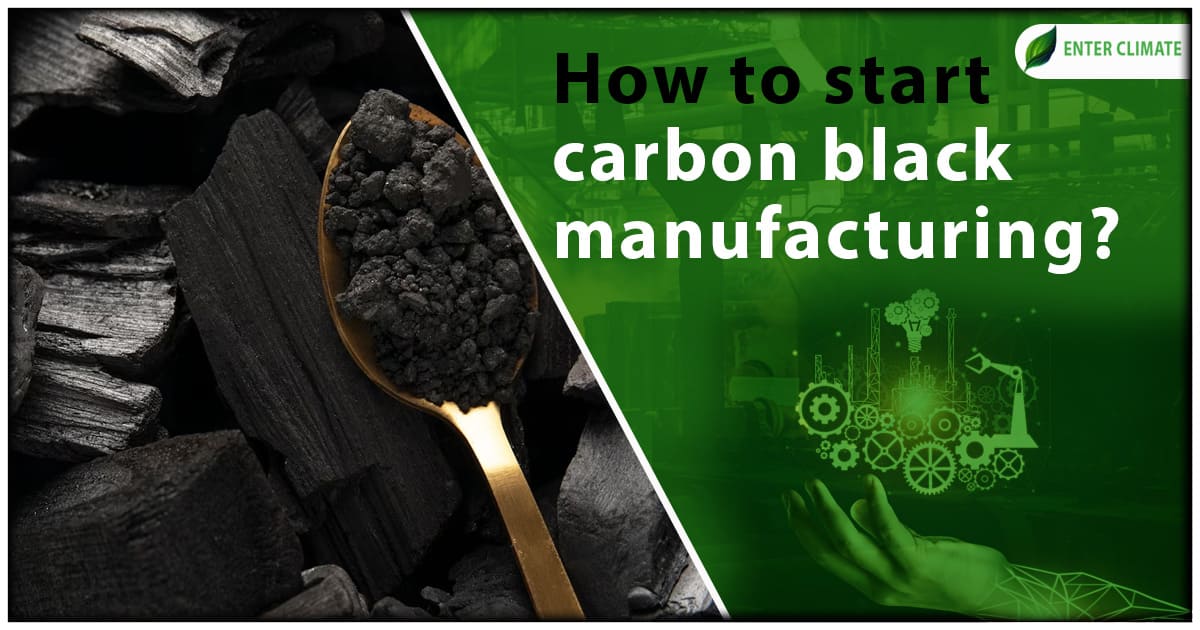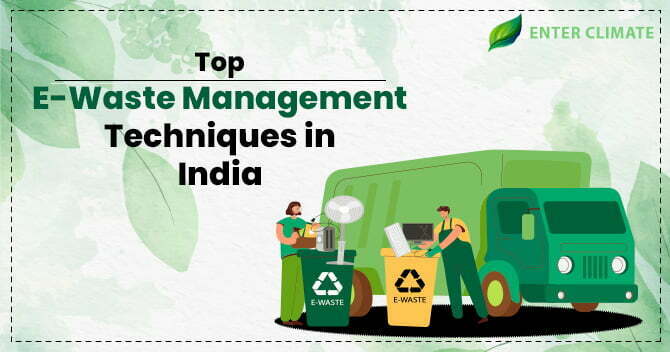How to Start Carbon Black Manufacturing?
 25 May, 2023
25 May, 2023 
Carbon black is a crucial component in producing tires, rubber goods, plastics, coatings, inks, and other products. Carbon is primarily used as a conductive filler, pigment, and particle-reinforcing material in plastic products. It enhances the mechanical properties and durability of these materials. Due to its strength, thermal conductivity, and excellent antistatic qualities, it is used as a filler in the production of several items, including plastic components like pipes, films, stretch wraps, containers for photography, and industrial bags. The carbon black market is expected to attain a value of USD 13,849.6 million globally in 2023, and demand is expected to grow at a CAGR of 4.8 per cent and reach USD 22,133.52 million by 2033. A substantial percentage of devices produced globally are favoured in black. Due to this, carbon black is a popular choice for a wide range of devices such as televisions, computers, laptops and smartphones.The future of the carbon black market looks promising for India, with opportunities in the transportation, industrial and construction sectors. The major drivers for the product in the Indian market are increasing tire production and growth in the plastic and coating market, driven by India’s rapid industrialisation. We discuss How to start carbon black manufacturing.
Advantages of Starting Carbon Black Manufacturing Business
Carbon black manufacturing units are industrial facilities that produce carbon black, a fine black powder used as a reinforcing filler in rubber products and as a pigment in various applications. The manufacturing is typically performed in small to medium-scale operations that require investments depending on the level of automation, type of product and investment in infrastructure and technology. The significant drivers of demand for this product in the Indian market are
Growth in Automotive Production: Increasing automobile production boosts tire, plastics, and coatings demand, ultimately increasing the demand for carbon black.
Increasing Demand for Specialty Carbon Black: Specialty carbon black demand is growing in plastic, coating, and printing ink applications.
Growth in Mechanical Rubber Goods: Increasing demand for conveyor belts, seals, gaskets, wiper blades, and moulded products in industrial and transportation industries will increase the demand for carbon black.
How is Carbon Black Manufactured?
Carbon black is typically made through “incomplete combustion” or “thermal decomposition” of hydrocarbon feedstock. The most common feedstock used in carbon black production is natural gas, oil, waste tyre or coal tar. These manufacturing units typically employ processes such as partial combustion or thermal decomposition of hydrocarbons, mainly natural gas or petroleum products.
Manufacturing Process
Carbon black manufacturing is a highly controlled process with various parameters, such as temperature, residence time, and feedstock composition, carefully monitored and adjusted to achieve the desired carbon black properties. Additionally, different manufacturing methods can be used to produce specific types of carbon black, such as furnace black, channel black, or thermal black, each with distinct characteristics and applications. Here is a simplified overview of the carbon black manufacturing process:
Feedstock Preparation: The chosen hydrocarbon feedstock is heated and vaporised to prepare it for carbon black production. This can involve processes such as distillation or cracking.
Carbon Black Formation: The vaporised hydrocarbon feedstock is introduced into a reactor or combustion chamber, undergoing controlled combustion or thermal cracking at high temperatures (around 1,500 to 2,000 degrees Celsius). This process breaks down the hydrocarbon molecules into smaller carbon units.
Particle Formation: As the hydrocarbon molecules break down, the carbon atoms aggregate and form tiny particles. These particles are predominantly carbon, with sizes ranging from 10 to 500 nanometers.
Separation: The carbon black particles are separated from the process gases. This is achieved using a combination of quenching, filtration, and centrifugation processes. The separated carbon black is collected as a powder.
Post-Treatment: The collected carbon black powder may undergo post-treatment processes to modify its properties for specific applications. Post-treatment can involve surface oxidation, pelletisation, or other treatments to enhance dispersibility, improve color, or impart specific characteristics to the carbon black.
How to set up a carbon black manufacturing plant?
Setting up a carbon black manufacturing plant in India involves several key steps. Here is an outline of the process
Feasibility Study and Creating a Business Plan
Conducting a thorough feasibility study to assess the viability of the project is very important prior to setting up carbon black units. It should evaluate factors such as market demand (domestic and international), competition, raw material availability, infrastructure requirements, regulatory compliance, and financial projections. Developing a comprehensive business strategy that outlines the manufacturing process, production capacity, product specifications, marketing strategy, and financial projections is needed. Business Plan also acts as a roadmap for the setup and operation of the plant and will be essential for obtaining financing and necessary approvals.
Site Selection: Identify and acquire a suitable location for the manufacturing plant. Consider factors such as proximity to raw material sources, transportation networks, availability of utilities, environmental considerations, and zoning regulations. Carbon black units are often located near petrochemical complexes or industrial hubs to ensure a stable supply of raw materials and access to transportation networks for distribution.
Technology Selection
Determine the appropriate technology and manufacturing process based on factors such as feedstock availability, desired product characteristics, production efficiency, and environmental considerations. There are 4 popular techniques used in the carbon black manufacturing.
- Furnace Black Process (preferred)
- Lampblack Process
- Acetylene Black Process
- Channel Process
Equipment Procurement and Installation
Sourcing and procuring the necessary equipment and machinery for the carbon black manufacturing plant. The major equipment needed are
- Carbon Black reactor
- Air heater and Oil Heater
- Filters and dryers
- Pin Mixer
- Pelletizer
- Combustor unit
Raw Material Sourcing
Establish reliable supply chains based on the chosen feedstock for the required raw materials, such as natural gas or oil. The major raw material includes
- Fuel (natural gas, oil etc.)
- Feedstock oil(LSFO)
- Potassium salt as a structure control additive
- Pellet binder
Applying for Licenses and authorisation
The entrepreneur will require a strategically applying for licenses and approvals from various governmental agencies. The major licenses include
- Business Registration: Registering the carbon black manufacturing business as a legal entity with the appropriate government authorities is typically the first step and involves obtaining a business incorporation or company registration.
- Industrial Licensing: Depending on the country’s industrial policies, an industrial license or permit may be required for establishing and operating a carbon black manufacturing unit. These licenses ensure compliance with specific regulations and standards.
- Pollution Control (Consent NOC): Carbon black manufacturing units are subject to emissions and pollution control regulations and are placed into the red industry category by CPCB[1]. Consigning pollution control consent or permits is necessary to ensure air, water, and waste management standards compliance.
- Hazardous Waste Management Authorisation: Carbon black manufacturing involves working with hazardous materials. Therefore, permits or licenses for the handling, storing, and transporting of hazardous substances may be required.
- Fire Safety and Building Permits: Compliance with fire safety regulations is essential. Obtaining fire safety clearances and building permits from local authorities may be necessary to ensure the manufacturing unit’s safety and compliance with construction codes.
Environmental Labor and Legal Compliance: Ensuring compliance with labour laws, employee health and safety regulations, and other employment-related requirements is important. This includes obtaining any necessary labour-related licenses or permits.
Quality Control and Testing
Today, in this segment, quality is what matters the most. Implement a robust quality control system to monitor and maintain product quality throughout manufacturing. Establish a laboratory for conducting necessary tests and inspections to ensure compliance with industry standards and customer requirements. The absorption technique is widely used to determine the morphology and structure of carbon black. It should be noted that carbon black has four types of aggregates. The lower grade has more ellipsoidal and spheroidal aggregates, whereas the high-quality grade contains mostly branched aggregates. Other quality parameters include
- Particle Size Distribution
- Pore Size Distribution and Porosity
- Surface Activity of Carbon Black
Market Analysis and Scope of Carbon Black Manufacturing Business in India
The carbon black manufacturing business in India has significant market potential and a favourable scope due to various factors:
Growing Demand: India’s industrial and automotive sectors are expanding, driving the demand for carbon black. Carbon black is a key ingredient in producing tires, rubber goods, plastics, coatings, and inks, which are essential for these sectors. Additionally, increasing urbanisation, infrastructure development, and rising disposable incomes contribute to the growing demand for carbon black.
Automotive Industry Growth: India is one of the world’s largest automotive markets, and the demand for automobiles, including cars, two-wheelers, and commercial vehicles, continues to rise. As carbon black is extensively used in tire manufacturing for vehicles, the growth of the automotive industry translates to increased demand for carbon black.
Infrastructure Development: India is investing significantly in infrastructure projects such as roads, bridges, railways, and construction activities. Carbon black finds applications in infrastructure-related products like rubberised asphalt, sealants, and construction materials, further driving the demand for carbon black.
Rubber Industry Expansion: The rubber industry, including tire manufacturing, is a major consumer of carbon black. India’s rubber sector is witnessing substantial growth, supported by the automotive and industrial sectors. This growth, coupled with the government’s focus on boosting domestic manufacturing, creates opportunities for carbon black manufacturers.
Favourable Government Initiatives: The Indian government has implemented policies and initiatives to promote domestic manufacturing, including the rubber and chemical sectors. These initiatives aim to reduce import dependence, enhance competitiveness, and support industrial growth, indirectly benefiting carbon black manufacturers.
Export Potential: India’s carbon black manufacturing industry has export potential due to its cost competitiveness and the increasing demand for carbon black globally. Carbon black produced in India can cater to international markets, especially in neighbouring countries and regions with a growing manufacturing base.
Conclusion
These manufacturing units play a vital role in meeting the growing demand for carbon black in India’s automotive, construction, and industrial sectors. To ensure environmental sustainability, carbon black manufacturing units implement various measures to minimise emissions and comply with local regulations. These measures include installing emission control systems, waste management practices, and energy efficiency initiatives. Overall, carbon black manufacturing units in India contribute to the country’s industrial growth and provide essential raw materials for various sectors while striving to minimise their environmental impact. However, it’s worth noting that the carbon black industry also faces challenges, such as environmental regulations, sustainability concerns, and fluctuations in raw material prices. Manufacturers, therefore, must ensure compliance with environmental standards and adopt sustainable practices to mitigate these challenges. Assistance in licensing and environmental compliances can greatly simplify the business setup process.













